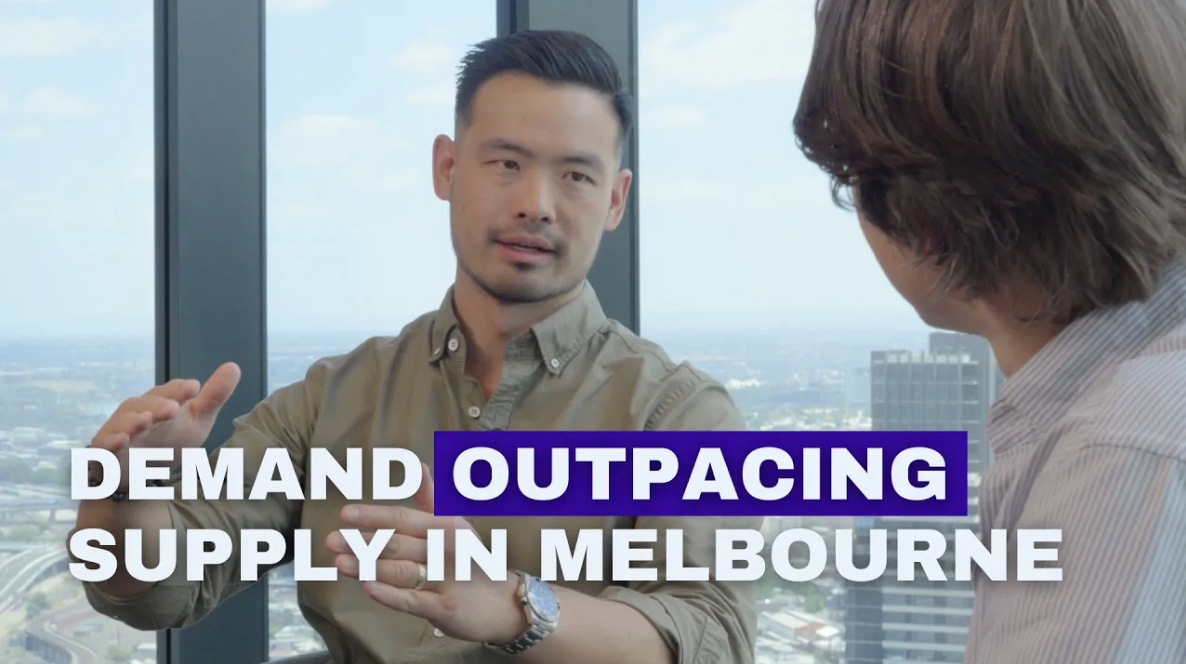By
Michael Bird
October 31, 2025
•
2
min read

Melbourne has officially overtaken Sydney as Australia’s largest city, but its apartment pipeline hasn’t kept up. With migration accelerating and no new supply on the horizon, industry experts warn that the next phase of Melbourne’s housing market will be shaped by scarcity, rising costs, and renewed investor focus on existing high-quality stock.
In this exclusive conversation, Apartments.com.au CEO Mike Bird sits down with Matt Khoo, CEO of ICD Property, at the recently completed Aspire Melbourne tower to unpack what’s really happening across the market, and why the numbers don’t add up.
Khoo describes today’s market as “a little bit upside-down.” Despite strong population growth, many developers remain hesitant to launch new projects because construction costs have risen 20–30% since COVID.
“If you want to build something now,” Khoo explains, “you’re looking at around $15,000 to $16,000 per square metre for a build-to-sell project to make sense in Melbourne. Yet we’re seeing completed projects like Aspire selling at $12,000 to $13,000 a metre, and that’s with no construction risk, no delivery timeline, and top-tier finishes.”
In practical terms, new developments need to sell for $17,000–$18,000 per square metre just to stack up. That creates an impossible competition with existing stock that’s priced 30–40% lower.
The only two levers that could rebalance supply, Khoo says, are either:
“The reality is, construction costs won’t drop,” he adds. “Labour rates are contracted to rise around 5% per year. So the only way new projects become viable is if existing stock grows in value.”
The combination of rapid population growth and a stalled development pipeline is setting up what Khoo calls “Economics 101” for Melbourne.
“We’re seeing more and more migration into Melbourne, surpassing Sydney and it’s going to keep growing. With no new supply coming online, the pressure on existing stock will only increase.”
For buyers and investors, that scarcity presents an opportunity. Projects like Aspire offer completed, high-quality apartments with full transparency around build quality, amenities, and location, something that off-the-plan buyers can’t always verify until completion.
Aspire’s design and amenity program reflect ICD’s learnings from earlier CBD towers. The development’s standout feature is its indoor pool, frequently compared to five-star hotel facilities and inspired by traditional Hungarian bathhouses.
Residents also benefit from expansive shared spaces, including:
The result is a project that combines prime location, premium amenity, and immediate livability, delivered under a pre-COVID construction contract that kept costs, and therefore sale prices, competitive.
For developers, Khoo’s comments underline a key structural challenge: unless end values rise substantially, new apartment supply will remain constrained. This has several ripple effects:
As Bird notes, showcasing projects that deliver on their promises, like Aspire, helps rebuild buyer confidence in the sector.
“We’re proud to be partnered with ICD and to highlight high-quality, completed projects that demonstrate what great development looks like in today’s market,” Bird said.
With construction costs locked in at historic highs and Melbourne’s population growth accelerating, existing stock is the next frontier for value growth. For developers, project marketers, and investors alike, the message is clear:
Supply isn’t coming back anytime soon and the best opportunities may already be standing.
Speak to the team about leveraging the Apartments.com.au audiences and services for your new development.